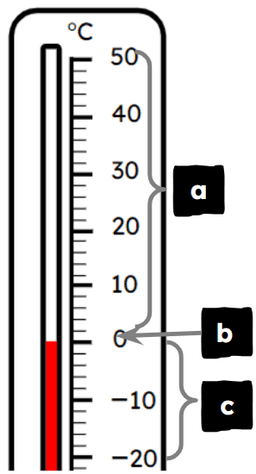Myths about teaching can hold you back
- Year 5
Interpret sets of negative and positive numbers in a range of contexts
I can interpret sets of negative and positive numbers in a range of contexts.
- Year 5
Interpret sets of negative and positive numbers in a range of contexts
I can interpret sets of negative and positive numbers in a range of contexts.
These resources were made for remote use during the pandemic, not classroom teaching.
Switch to our new teaching resources now - designed by teachers and leading subject experts, and tested in classrooms.
Lesson details
Key learning points
- For negative temperatures, the further the number is from zero, the colder it is
Keywords
Temperature - How hot or cold something is.
Elevation - Used to describe an object’s height above a given height, such as sea level.
Common misconception
Negative temperatures relate to positive e.g. −5℃ is warmer than −3℃ because 5℃ is warmer than 3℃.
Emphasise directional relationship e.g. numbers decrease as they move to the right. Practical examples can help e.g. freezer temperature.
To help you plan your year 5 maths lesson on: Interpret sets of negative and positive numbers in a range of contexts, download all teaching resources for free and adapt to suit your pupils' needs...
To help you plan your year 5 maths lesson on: Interpret sets of negative and positive numbers in a range of contexts, download all teaching resources for free and adapt to suit your pupils' needs.
The starter quiz will activate and check your pupils' prior knowledge, with versions available both with and without answers in PDF format.
We use learning cycles to break down learning into key concepts or ideas linked to the learning outcome. Each learning cycle features explanations with checks for understanding and practice tasks with feedback. All of this is found in our slide decks, ready for you to download and edit. The practice tasks are also available as printable worksheets and some lessons have additional materials with extra material you might need for teaching the lesson.
The assessment exit quiz will test your pupils' understanding of the key learning points.
Our video is a tool for planning, showing how other teachers might teach the lesson, offering helpful tips, modelled explanations and inspiration for your own delivery in the classroom. Plus, you can set it as homework or revision for pupils and keep their learning on track by sharing an online pupil version of this lesson.
Explore more key stage 2 maths lessons from the Negative numbers unit, dive into the full primary maths curriculum, or learn more about lesson planning.

Licence
Prior knowledge starter quiz
6 Questions
Q1.Tick all of the options where the numbers are arranged in ascending order.
Q2.Tick all of the negative values.
Q3.Match the parts of the thermometer with their descriptions.

positive
neither positive nor negative
negative
Q4.Which positive temperature is the same distance from zero as −20℃? ℃
Q5.What number is exactly halfway between −7 and −6?
Q6.Match the pairs of numbers with their correct differences.
16
15
18
17
Assessment exit quiz
6 Questions
Q1.Tick all the statements that are true.
Q2.Order these temperatures, starting with the coldest.
Q3.Use the information in the table to tick all the statements that are true.

Q4.Use the information in the table to tick all the statements that are true.



